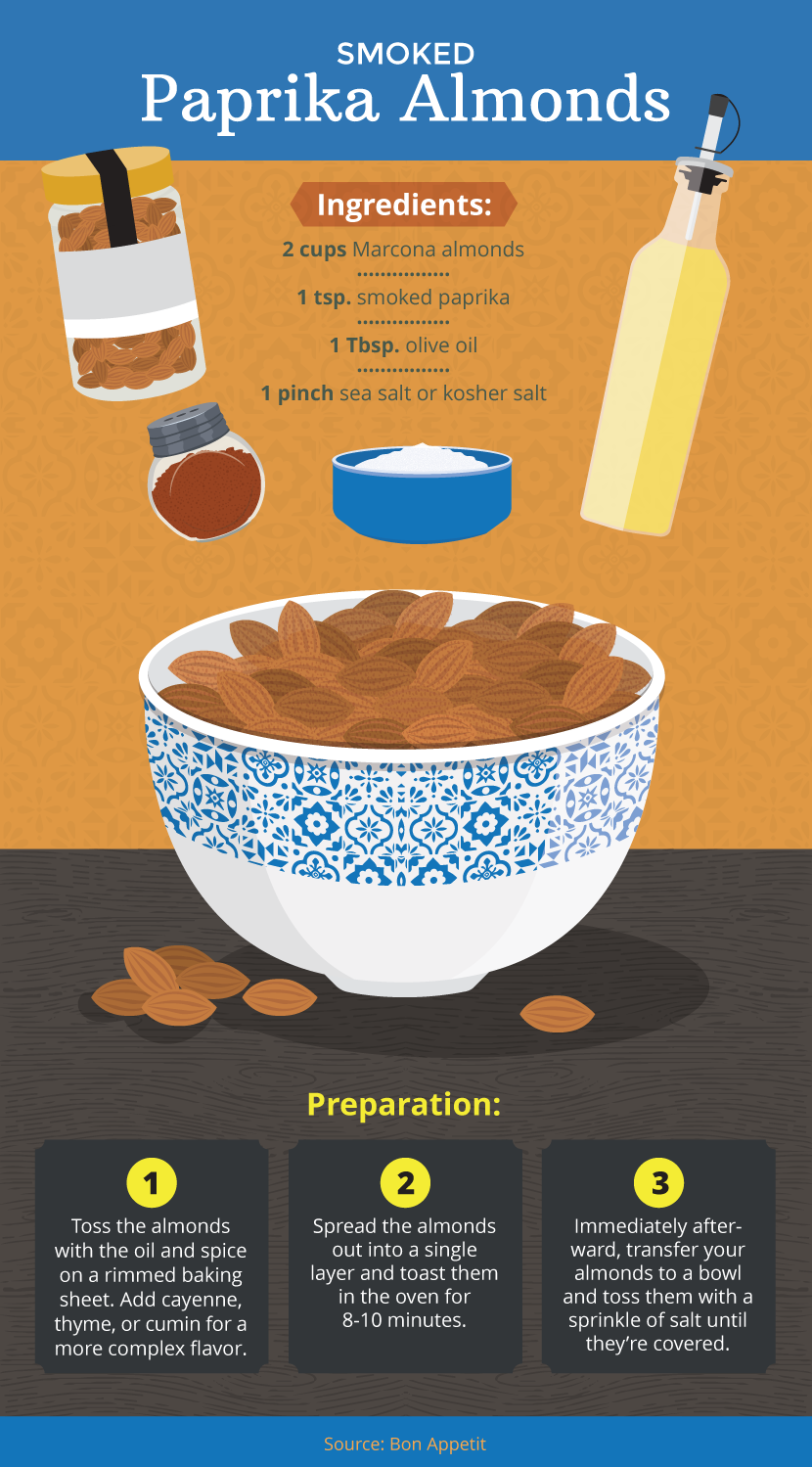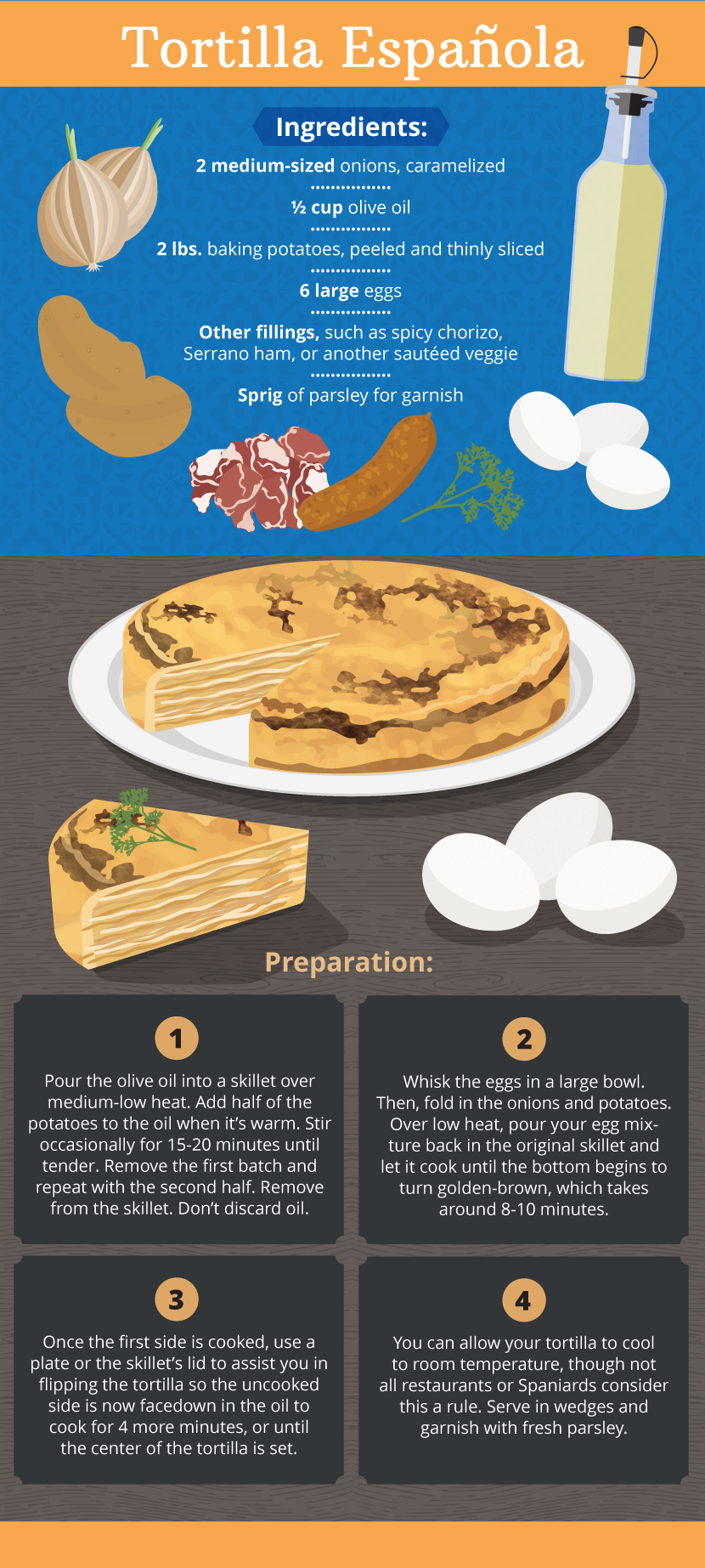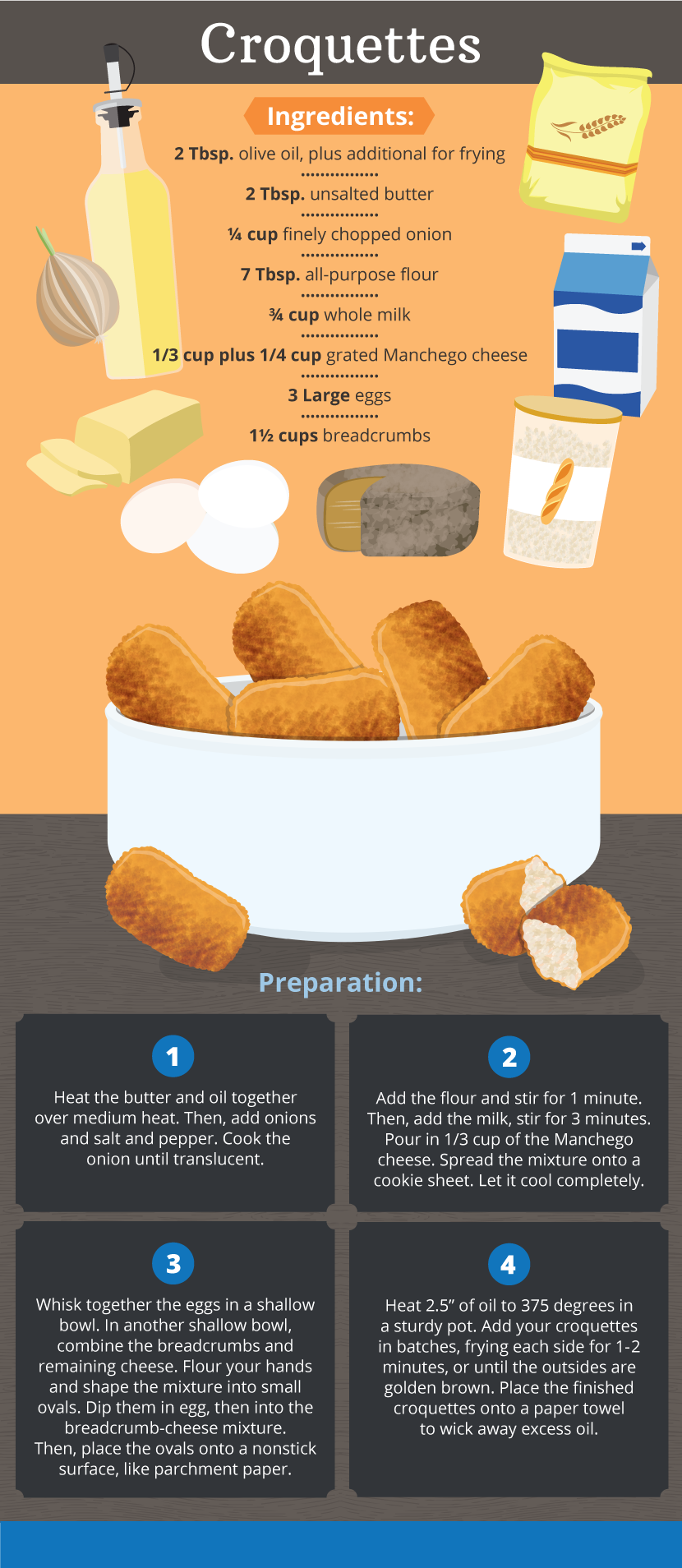Viva La Tapa
How to Cook and Serve Spanish Small Plates
Let’s get one thing straight: Tapas are not appetizers. In fact, tapas only came to be out of necessity.
Historians cite plenty of different potential sources for the name of the now-famous Spanish word, but all seem to portray a situation in which the tapa served a purpose beyond priming the taste buds for the main course.
One possible root of the word tells the story of poorer times in Spain, when travelers couldn’t afford a full plate of food on the way to wherever they were going.
Owners of the bodegas, inns, and restaurants along the road came up with a solution: They offered small portions of the main dish at a discounted rate.
They called them tapas, because the word tapa means pot cover, and that’s the surface on which these restaurateurs would serve patrons their sample.
Tapa is the word for pot cover because the verb form of the word, tapar, means to cover.
That’s why other historians believe that the concept of the tapa came from the south of Spain, where bar patrons likely ordered the sweet sherry that comes from the region.
The sugary libation, paired with Andalusia’s year-round warmth and sunshine, meant that it attracted fruit flies whenever it sat on the bar for too long.
To solve the problem, bartenders started to cover cups with slices of bread or ham to keep flies from the prize.
No matter where the word came from, one thing is for sure: The tapa has endured centuries of changing diets and lifestyles. They’ve even managed to make their way from the Mediterranean shores of Spain to the United States and beyond.
Here, there, and everywhere, the tapa is perfect when paired with a night on the town.
A large group can order a table full of tapas so everyone has a taste of everything without overdoing it. It’s even more fun when enjoyed with Spanish red wine, of course.
Perhaps you want to take your love of tapas one step further, foregoing the local Spanish restaurant and trying your hand at prepping some of your own small plates to share with your closest amigos.
You obviously have creative license when you’re in the kitchen and can take your tapas party wherever you want it to go. However, the following four recipe ideas are some of the most time-honored ones in all of Spain.
Whip them up and you’re well on your way to an authentic night in Madrid, Barcelona, or Seville, without boarding a single plane.

Fried Almonds
Adapted from Bon Appétit
No Spanish tapas spread would be complete without a selection of meats – especially the pricey-but-worth-it Serrano ham – cheeses, tangy olives, crunchy breadsticks called picos, and a baguette.
Obviously, you can buy these things from your local grocer, so there’s no need to cure a ham leg or bake bread on your own.
What you can do is fry up some almonds for your party, which is another common tapa and a tasty addition to your charcuterie platter.
Since you probably don’t have a deep fryer on hand, preheat your oven to 350 degrees and pull out the following ingredients:
- 2 cups Marcona almonds
- 1 tablespoon of olive oil
- 1 teaspoon of smoked paprika
- Pinch of sea or kosher salt
- Toss the almonds with the oil and spice – you can also add cayenne, thyme, or cumin for a more complex flavor – on a baking sheet, preferably one with a rim.
- Spread them out into a single layer and let them toast in the oven for 8 to 10 minutes.
- Immediately afterward, transfer your almonds to a bowl and toss them with a sprinkle of salt until they’re covered.

Tortilla Española
Adapted from AllRecipes.com
This Spanish classic is often confused for an omelet, but it’s so much more. Inside of your triangular slice, you’ll find thin slices of savory fried potato that take it to a whole other level.
Spaniards argue over whether the tortilla should contain onions as well – I vote yes.
Some versions of the recipe even call for zucchini, peppers, mushrooms, and more. As a general rule, if you like it in an omelet, you’ll love it in a tortilla Española.
- 2 onions, caramelized
- ½ cup of olive oil
- 2 pounds of baking potatoes, peeled and thinly sliced
- 6 eggs
- Other fillings, such as spicy chorizo, Serrano ham, or another sautéed veggie
- Parsley to garnish
- Pour the olive oil into a skillet over medium-low heat. Add half of the potatoes to the oil when it’s warm, stirring occasionally for 15 to 20 minutes or until tender. Remove the first batch and repeat with the second half. Remove from the skillet, leaving the oil.
- Whisk the eggs in a large bowl. Then, fold in your onions and potatoes.
- Over low heat, pour your egg mixture back in the original skillet. Let it cook until the bottom begins to turn golden brown, which takes 8 to 10 minutes.
- Once the first side is cooked, use a plate or the skillet’s lid to assist you in flipping the tortilla so the uncooked side is now facedown in the oil to cook for 4 more minutes, or until the center of the tortilla is set.
- You can allow your tortilla to cool to room temperature, though not all restaurants or Spaniards consider this a rule. Serve in wedges and garnish with parsley.
Patatas Bravas
Adapted from AllRecipes.com
This time, potatoes take center stage in a zesty, spicy sauce-covered dish that’s a crowd pleaser. You can pair it with Spanish aioli sauce to cut down on some of the heat.
- 2 russet potatoes, peeled and cubed
- 2 cups plus 3 tablespoons olive oil
- 1 tablespoon plus 1 teaspoon salt
- 1 onion, diced
- 1 garlic clove, finely chopped
- 1 red chili, minced
- ½ teaspoon smoked paprika
- 1 14-ounce can whole peeled tomatoes, drained
- Toss the potato cubes, 2 cups of olive oil, and tablespoon of salt in a cold skillet before placing it over low heat. Cook until the potatoes are softened, which takes 12 to 15 minutes. Then, turn the heat all the way up to fry your potatoes in 5 to 6 minutes. Place the cubes on paper towels to soak up some of the extra oil.
- Heat the additional 3 tablespoons of olive oil over medium heat. Add the onion and teaspoon of salt and cook until the onion is soft. Add garlic, chili, and paprika and let everything simmer for 2 minutes.
- Add the tomatoes to your onion-and-spice mixture. Let everything simmer before pouring the contents of your saucepan into a blender and pureeing it until you have a smooth, spicy sauce.
- Place your cubes on a serving platter and pour your Brava sauce on top. Optionally, serve with aioli sauce on the side for dipping.

Croquettes
Adapted from Martha Stewart
Here’s the toughest Spanish specialty to master, but you’ll be glad you did. You can really mix things up in terms of filling for these fried finger foods – ham, chicken, cheese, mushrooms –
which means you can have great variety and even vegetarian options at your tapas party.
- 2 tablespoons olive oil, plus additional for frying
- 2 tablespoons unsalted butter
- ¼ cup finely chopped onion
- 7 tablespoons all-purpose flour
- ¾ cup whole milk
- 1.75 ounces Manchego cheese, grated
- 3 large eggs
- 1 ½ cups breadcrumbs
- Heat the butter and oil together over medium heat. Then, add onions and salt and pepper. Cook the onion until translucent.
- Add the flour and stir for 1 minute. Then, add the milk and stir for 3 minutes. Finally, pour in 1/3 cup of the Manchego cheese. (You can also add finely chopped meats here, too.)
- Spread the mixture onto a cookie sheet and let it cool completely.
- Whisk together the eggs in a shallow bowl. In another shallow bowl, combine the breadcrumbs and remaining cheese. Flour your hands and shape the mixture into small ovals. Dip them in egg, then into the breadcrumb-cheese mixture. Then, place the ovals onto a nonstick surface, like parchment paper.
- Heat 2.5 inches of oil to 375 degrees in a sturdy pot. Add your croquettes in batches, frying each side for 1 to 2 minutes, or until the outsides are golden brown. Place the finished croquettes onto a paper towel to wick away excess oil.
It might be a great effort to put together the Spanish-style fiesta you envision, but one taste, one clink of the wine glasses, and one hearty laugh between you and all of your friends will prove it all to be worth it.
No one ever accused tapas and red wine of being boring, either, so get ready to really enjoy the small plates you’ve created. In other words, with these four recipes, your party is tapada – it’s covered.
Embed the article on your site

